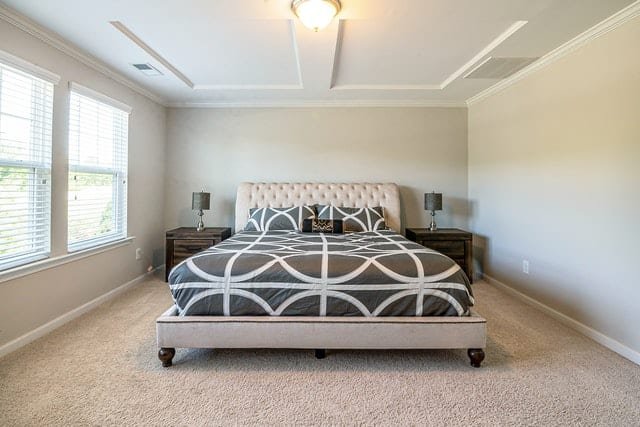
More and more people suffer from allergies affecting the respiratory tract causing frequent coughs and sneezing, but also contact allergies that cause irritation, redness and dermatitis.
If these symptoms occur when you are in the bedroom, it is very likely the time has come to replace the old mattress with a hypoallergenic model, or in case of shortage of budget provide for a good sanitation. Let’s try to understand how to make a choice that meets our needs.
What is the best mattress against allergies?
Each type of mattress has specific characteristics that make it a suitable choice for certain needs. As for the ability to protect against allergens, the most effective solutions are products in memory foam and natural latex.
Basically, mites develop wherever they find nourishment or where dust lurks. The aforementioned mattresses have particular structures that favor internal air circulation and therefore prevent accumulations of dust and the proliferation of mites.
Latex
If your allergy is linked to synthetic chemicals, purchasing a 100% natural latex mattress protects you from any risk, as it is composed only of water and the material extracted from the rubber tree (Hevea brasiliensis). Obviously this is valid as long as you are not allergic to latex!
Memory foam
Viscoelastic foam is composed of a mix of polyurethane foam and other chemicals added to ensure an adequate level of density and viscosity. Memory foam mattresses are suitable for those who suffer from mite allergies or want to prevent such ailments. The reasons are the chemical composition and structure of the material which hinder the reproduction of microorganisms.
Pocket springs
In general it is not a suitable choice for those suffering from respiratory allergies. The reason is the internal structure with many spaces that favors the accumulation of dust and dispersion as a result of movements during sleep. However, this construction feature also ensures high transpiration and rapid dissipation of humidity which counteracts the proliferation of mites.
If we really can’t help but sleep on this type of support, it is advisable to buy a mattress with independent pocket springs that limits the movements of the mattress and equipped with a hypoallergenic fabric cover.
The importance of the coating
In order not to nullify or compromise the hypoallergenic properties of the material with which the mattress is made, we must pay close attention to the coating which is the preferred environment for mites to proliferate, even more so of the internal layers because it is richer in oxygen.
We always check the type of fabric that must be anti- mite, hypoallergenic and possibly treated with natural antibacterial substances such as, for example, silver.
Another factor of great importance is the possibility of removing the coating for washing. In this sense, it is important to read the label to understand if we can wash at 60 ° C, which is the temperature necessary to kill bacteria and mites.
Tips to reduce the occurrence of allergies
We have seen how to avoid allergic problems it is essential to choose a mattress made with certain materials and equipped with a coating with specific qualities.
In addition, there are a number of measures that further limit the onset of respiratory or contact allergies. In this regard, here is a list of useful tips:
- Choose bedding made with anti-mite fabrics. We must never forget that mites prefer natural fibers, therefore we avoid woolen blankets and duvets made of goose feathers or similar materials;
- Carefully check the pillow which must have the same hypoallergenic qualities of the mattress both for the composition of the material and the fabric of the cover;
- Maintain a low humidity value in the bedroom. Mites proliferate more easily in very humid environments therefore, if necessary, we use a dehumidifier to control the percentage of humidity;
- Ventilate frequently. The ideal would be to expose the mattress to the open air, however it is an operation that is often too uncomfortable and sometimes impossible, especially with double models. Much easier to remove the mattress cover and leave it for a few hours in the sun to kill the mites and eliminate the accumulated humidity. The same procedure must be carried out for pillows, sheets and blankets;
- Remove the dust. The mites feed mainly on dead epithelial cells, molds, pollen, all substances that are found in the dust. Consequently, it is essential to keep the bedroom clean, preferably using a vacuum cleaner equipped with a HEPA filter.
